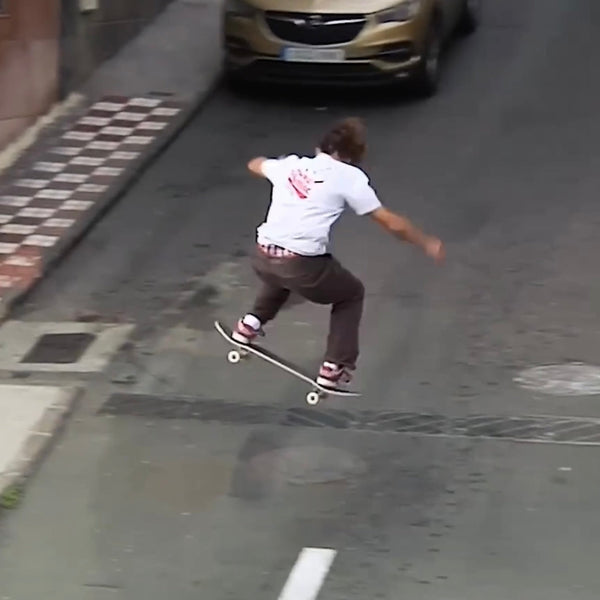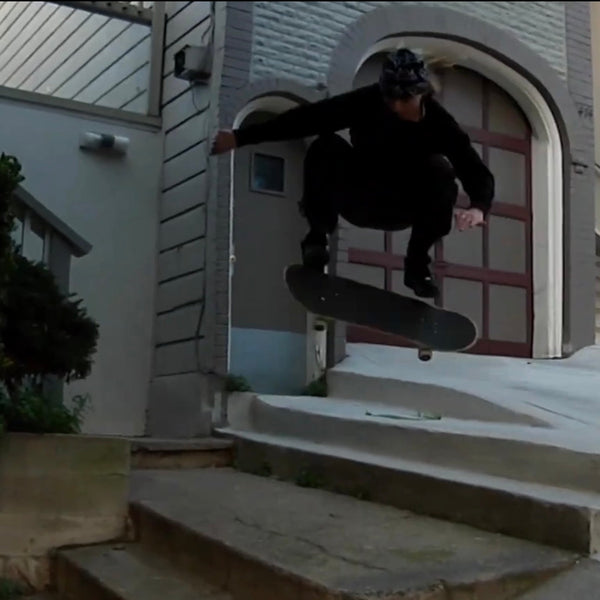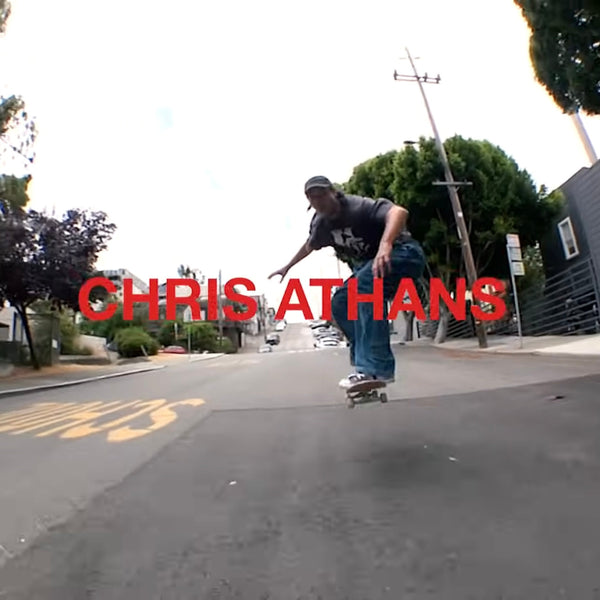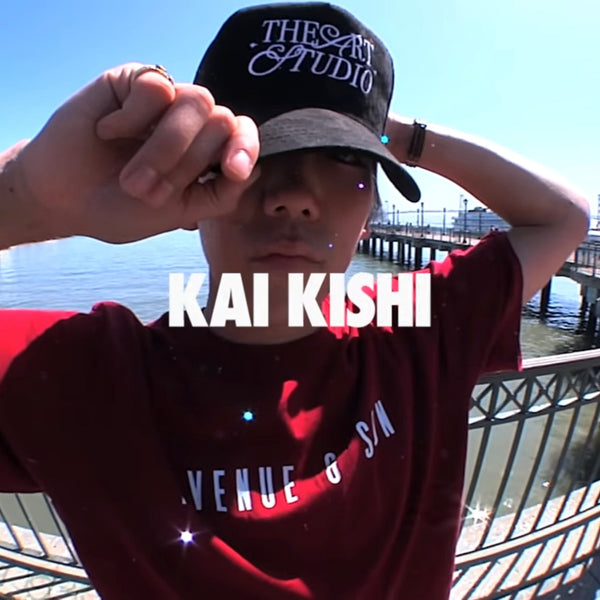Your cart is empty!
Polish Don't Demolish Interview
I've been following an Instagram account called Polish Don't Demolish since it began, I don't how I found it but I can only put it down to the demons of the algorithm which drip feed me content whilst I endlessly doom-scroll. With no knowledge of skatepark building and design PDD's instagram account has managed to drip feed me lessons in concrete, sealant and adverse weather effects on skateparks.
I hit up Polish Don't Demolish to find how this endeavour to educate the masses whilst finger scraping his way across coastal skateparks started and what's going on with sealing concrete?
Letter gliding by Fraser.
What's your experience in skatepark building?
So, full disclosure on this. I've never built a skatepark! I'm actually a professional town planner involved with major infrastructure projects involving such things as housing, dams, flood defence, and roads. I cover everything from the funding of these projects to their construction. I'm also a skateboarder and surfer of some 37 years, which is fucking painful to look at in print! I became interested in concrete, it's uses, and how sustainable it is through our work on flood defences. With the help of some fantastic people in the skatepark industry as well as the concrete industry in general I started to apply what I understood and began unpicking the question of what does and doesn't make a good skatepark from the perspective of construction techniques. You could argue that pouring concrete isn't the most sustainable option for skateparks. But as long as you apply some simple maintenance techniques they can last 30-40 years. That's pretty good value for money and in my opinion a sustainable approach. Even when the smooth surface breaks down over time, there are techniques for restoring them back to new or in some instances better than when they were first built.
What is polishing?
Haha! Yep I get asked that a fair bit. From a skatepark perspective, you probably wouldn't have heard much about polishing concrete as pretty much all parks are finished to a standard that gives a very smooth finish. The practice of polishing concrete is nothing new, think about the smooth surface of an airport terminal - that's polished concrete. Grinding and polishing concrete is simply the process of smoothing out the roughness. You'll see a lot of the older parks in the UK from 10-20 years old have lost the smooth finish. The original smooth finish (cement paste) will have eroded away as unprotected concrete often does. This leaves cement and small crushed stones called finings. Once these show through it's the beginning of the end for the surface. So polishing these stones flat using special discs and machinery is a great way to get the park back to new. Hackney Bumps is a great example of this process being applied effectively, and the renovation of Stockwell applied the process in part as well.
Have you found that a lot of companies aren't fulfilling that duty?
It's not the polishing that's the problem. Polishing is a process to rectify the lack of appropriate techniques to stop the concrete from eroding. As soon as concrete cures it immediately starts to erode. This is why it's so important the concrete is sealed during the curing process and after the concrete is cured. A good competent skatepark builder will ensure that sealant is used and recommend that it's reapplied as and when required, usually once a year. It stabilises the concrete and stops water ingress. It's the water ingress that is the biggest worry. If you've ever skated in a newly finished park that hasn't been sealed you'll see all the concrete dust on your grip tape. That's the concrete dusting away! All your money and effort blowing away in the wind! Luckily the better skatepark builders such as Betong, Opus, Clarke and Kent seal the surface of all their projects.
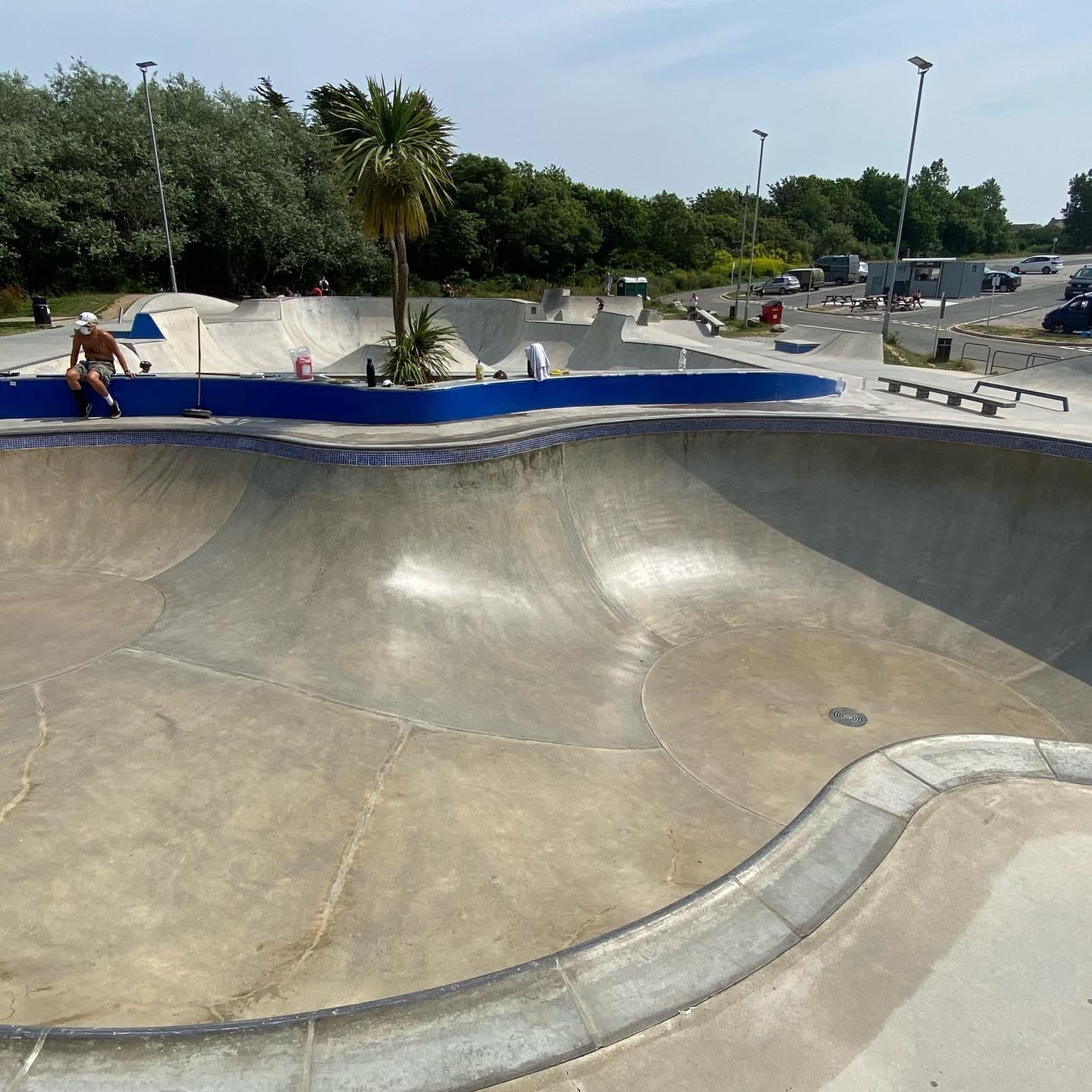
Fresh sealed bowl at Concrete Waves, Newquay
How is it possible for them to get away with not doing the job correctly?
The main reason some skatepark builders get away with it is that the process of building a skatepark isn't governed by any regulations. There are no building regulations for groundworks of this nature in the UK. So no standard exists and no checks are applied. Also, most parks are funded by councils that simply do not have the knowledge and expertise to challenge the park builders. So they technically have free rein. If they want to cut a corner, speed up the process and do things on the cheap they can. We've seen some disasters down here in Cornwall and have had to attempt to pick up the pieces.
Is there any way for the average skateboarder to fix their parks?
Yes, there is! Techniques to fix and repair pool coping, cracks and chunks or remove graffiti safely and seal and reseal the park yourself are all available on YouTube. That is the great thing about skateboarding and the DIY movement; it's all over YouTube. Thrasher has published loads of information on building and repairing parks. That's the nice thing about concrete, it's cheap and easy to use. The guys who look after Shoreham Bowl are a fantastic bunch and are always happy to share information and advice. Most things can be fixed with a quick trip to Screwfix! But the main thing is maintenance, look after it and you'll barely need to repair it. Obviously, some faults can't be fixed and will be caused by poor construction techniques. I've listed most of these with examples on my Instagram page.
As more skateparks are getting built throughout the country do you have any recommendations for grass-roots groups to check?
Sadly not, the information on skatepark construction is pretty scarce. But companies such as Betong and Opus have been great at communicating best practices and explaining why. I would say employing a third-party expert to oversee the tender process and check the build would be useful and money well spent. A competent concrete/structural engineer would be able to advise and point out any potential problems with the proposed construction techniques. We had one incident down here where a skatepark contractor tried to go toe to toe with a semi-retired civil engineer with 40-plus years of experience. It didn't end well for the skatepark contractor! At the end of the day, concrete is concrete whether it's a bridge or a skatepark and there are right and wrong ways to do things. Hopefully, what we've learned over the past decade or so can be applied moving forward. I'm led to believe Skateboard GB is bringing out some guidance.
With all this knowledge what led you to starting Polish Don’t Demolish, do you see it continuing as a project or is it somewhat of an online portfolio of findings?
Yes, it's more of an online portfolio/portal for people to connect with and ask questions. I kept getting asked for information but didn't have a social media presence at all, I hate it. So I set up Polish Don't Demolish. I am in contact with a few concrete specialists and working with some local councils whose parks need repairing. So hopefully we can join the dots between councils and specialists and get some of these old crusty parks back to new.
How do you gather the information about the build projects? Are they readily available to the public?
It can be difficult getting information on the build projects and that's because the details of the build often don't exist. If you pick up a Maverick planning application you'll see very limited information. Some specifications on transition, rebar thickness and a computer-generated image. As mentioned earlier there is no requirement to submit this information. Compare that to the information that USA or Australian skatepark builders need to submit, it's crazy. We're way off in this country, we don't take it seriously enough in my opinion and because of that, we're wasting so much money. Although it is a fine line, you don't want too much regulation that stifles creativity. But we need these parks to last. The way I try to explain it to people is that we have a new generation of 5-year-olds coming to skateparks every year. We need to keep these parks in good condition so they can continue to be enjoyed. Skating is painful enough without the surface being 40-grit!

"Why you shouldn't use steel firm work."
The finger-scraping technique of checking concrete videos look great and sound awful, have you had anyone asking for more of them?
Yep, that finger-scraping sound haunts me! Not had any requests for any more of that. But it does emphasise the difference in degradation between sealed and unsealed surfaces. Those videos are at Concrete Waves Newquay. It's a really good case study on the importance of sealing the surface. We still have a very smooth surface in the pool but the unprotected parts are feeling more like 80-grit sandpaper. God bless the crew down there that keep that place in great condition.
I love how people in your line of work become interested in what most people see as a basic building material.
Yes, it's basic and that's the beauty of it I guess. When you add steel to it's super strong and you can shape it almost however you like. It's been around as Portland cement since 1824 and was invented in Leeds by Joseph Aspdin. If you put a material like that in the hands of imaginative people you can create some amazing rideable structures. I'm not talking about the cookie-cutter shite that keeps appearing. The work done at The Farm Bowl in Devon and Outside Devon near Bantham have pushed the boundaries in design and finish. Jeremy Donaldson at Curve Studio and what he did in Everton is amazing. As a town planner, I'm a big advocate of creating public realm spaces that are wheel friendly. It's a no-brainer, if we're serious about reducing carbon and net-zero then we need to make spaces accessible, smooth and linked up. Endless snake runs to Lidl and back via the pub, it's a dream of mine!
How did you find yourself getting into town planning? Did skateboarding inform this career path in any way?
I sort of fell into it, partly interested in it and needed money/career that would let me surf/skate and travel. I did an Environmental Planning Degree and then a Master's Degree in Coastal Planning I guess surfing inspired the career choice. Although skating didn't inform a career choice directly, it informed my life. It made me look at things differently, made me independent and determined, and gave me a "can do" attitude. I loved growing up on a skateboard. When Rookie was set up they released a tee with "skateboarding saved my life" in tiny lettering on the chest, I've still got it and had the words tattooed on me. I owe skating more than you know, so this whole thing I'm doing along with the skate park repairs we do is me attempting to give a little back. I'll never repay the debt, I owe too much!
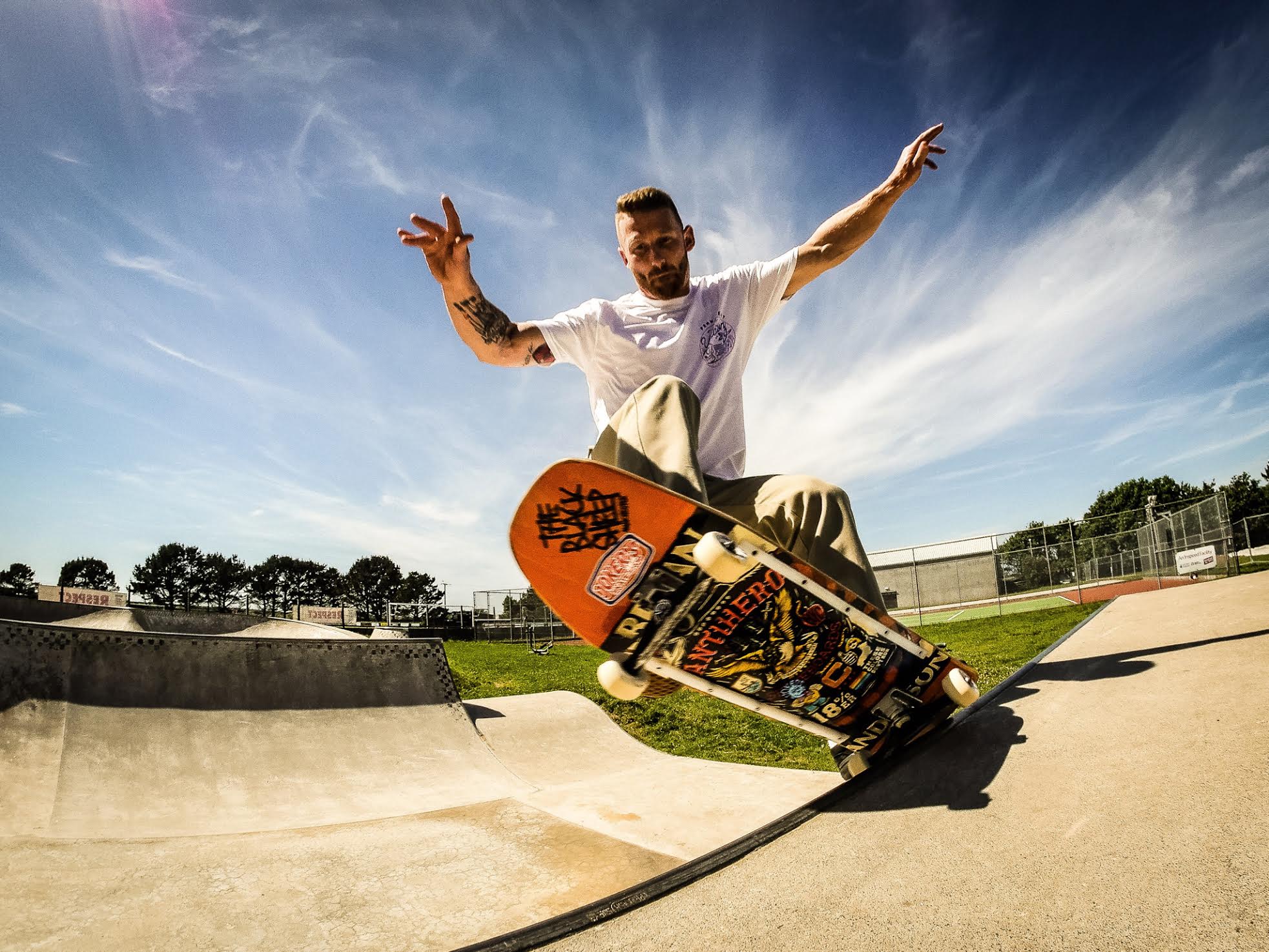
Follow for more Polish Don't Demolish here
